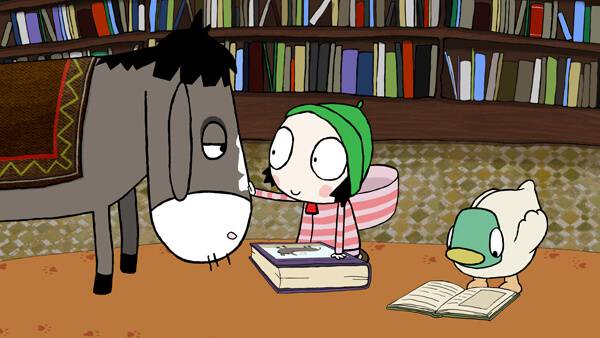Producing Animation: Jamie Badminton, ‘Sarah & Duck’
A new children’s animated TV series has made its way onto our TV screens and charmed its way to become the most popular CBeebies show on the BBC iPlayer. Sarah and Duck is the latest project to come out of Karrot Animation and centres around Sarah and her best friend Duck and the fantastical adventures they share together.
With its playful charm and delightfully eccentric support characters, the show remains true to the playful nature of childhood and as such has become a hit with children and parents everywhere. From an animation point of view the design is unique and the character applied to the animation demonstrates the amount of effort that has gone into creating this show.
We caught up with Jamie Badminton the producer of Sarah & Duck to find out what makes the childrens animated TV series tick!
What made Sarah & Duck the show you wanted to bring to the screen?
By the end of our first year of Karrot Animation back in 2009, as a core team of 8, we developed about 10 show ideas between us, ‘Sarah & Duck’ included! Though this was quite a large number, we believed (and still do believe) in several of them and learnt a lot from initial pitches to broadcasters and distributors. However, Sarah & Duck’s pure simplicity coupled with some early broadcaster inklings made it the right show to take forward and develop further first. As well as the natural appeal, it is just simple enough for us production-wise to be able to create the show entirely in our London studio, which was important for our first project. We needed to learn the process inside out if we wanted to succeed at making 40 successful episodes in one batch.
The visuals for the show are charming can you explain the design choices?
Sarah Gomes Harris, the show’s co-creator, established the visual illustration style and has some really strong colour sensibility rules (for example, only using strong colours like Red in moderation as accent colours). She also had a love of patterns, so the texture in Sarah & Duck’s garden hedges is based on a mosaic captured in a holiday photo.
The show has a very simple, sweet tone whilst also incorporating engaging fantasy scenarios. How important is that when appealing to children and the age group?
I think we just tried to make sure the show had its own logic that works – as long as things make sense to Sarah & Duck (as a 7 year old who’s best friends with a duck), then we let the story unfold in that way!
The educational aspect of the show is there but it is well guised in entertainment, how do you find that balance?
When you’re a pre-schooler and doing things for the first time, there’s always plenty of both entertainment and discovery built in, so educational aspects of the show have come naturally whenever they’re included. We always let the initial story concept and our familiarity with the characterisation lead things and I don’t think we’ve ever had to force anything in…
Roger Allam provides the narration. What made him right for the role?
Roger’s wonderful dry sense of humour never contradicts the sincerity of his conversations with Sarah & Duck, and I think this resonates with adults especially. Despite the often very unusual things going on in front of him, Narrator responds with both affection and surprise, and that is a very familiar requirement of most parents’ lives when living with pre-schoolers! We wanted him to play the role of both parental figure and friend to Sarah & Duck and I think he achieves both equally.
Clearly, a lot of care has gone into the animation of the characters; it would be easy to say “its for kids it does not matter”, What makes character animation in children’s shows so important?
Oh gosh! Children understand, recognise and respond to truthfulness better than most adults, so it is crucial that the characters behave in a well-observed and believable manner for the humour to ring true. In animation for any age, the stronger the character animation, the more the emotional investment will be lifted for the audience. We’re determined to do the best at that (thanks to our animation director Tim Fehrenbach) as we know just how much a ‘pitch-perfect’ performance can contribute to the storytelling experience!




